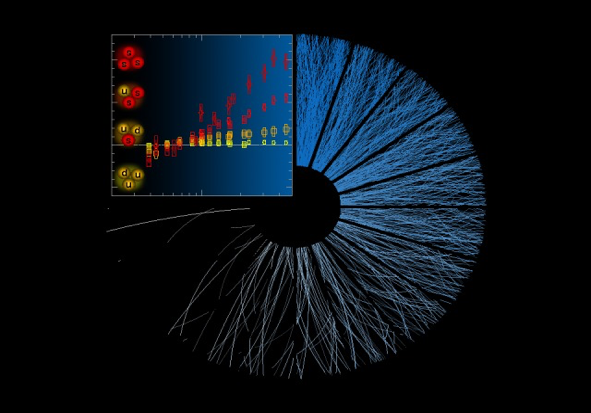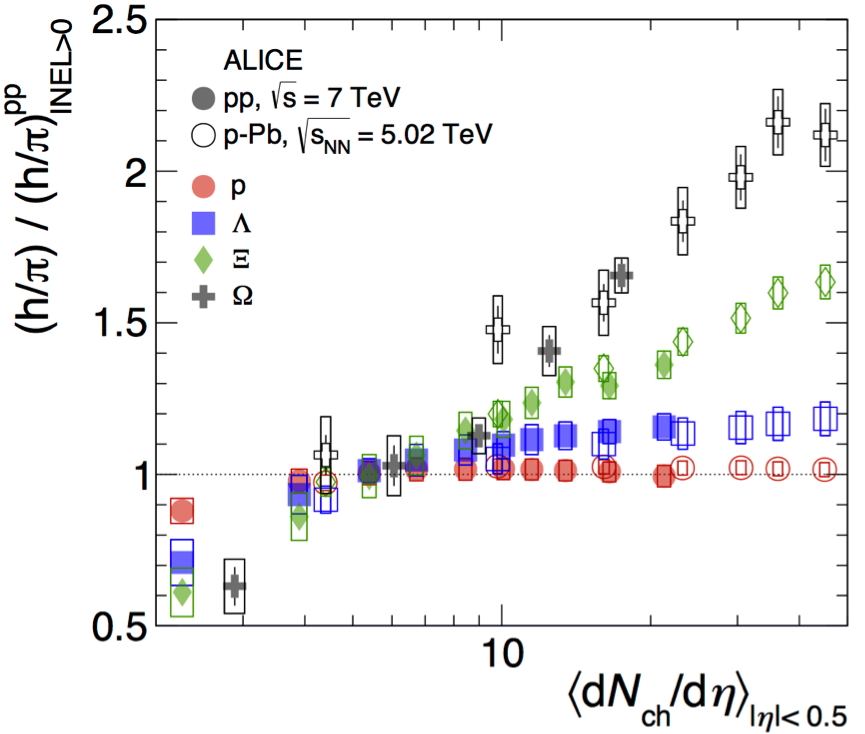Strangeness enhancement

Strange particles, K-mesons (Kaons, made up of a strange and a non-strange quark pair), Lambda (uds), Xi (dss), and Omega (sss) baryons have an appreciable lifetime before they decay into ordinary matter. These decays have a characteristic V-shaped geometrical configuration, with the decay products originating from a secondary vertex, at some distance from the interaction point. The strangeness data obtained in pp collisions are particularly important to improve the overall modeling of those collisions. In addition, the pp measurement serves as a baseline for the measurements in Pb-Pb collisions, where we expect to produce the Quark-Gluon-Plasma (QGP). An enhancement in the production of particles with strange quarks has long been thought to be a signature of extra degrees of freedom available in the QGP. Indeed, this enhancement has been seen at lower energies as well: the larger the volume of the collision, the more the number of Lambda, Xi and Omega baryons increases with respect to the baseline (a pp or a Be-Be collision). This is also observed at Pb-Pb collisions at the LHC, however, with a caveat: the enhancement is smaller than that at lower energies! We think this is due to the complexity of our baseline: at these high energies, pp collisions to which we compare are more complex and produce much more strangeness than events at lower energies.

Measurements from the Run 2 of LHC have led to the observation of strangeness enhancement in high-multiplicity proton-proton and proton-lead collisions. It has been found that the integrated yields of strange and multi-strange particles, relative to pions, increase with the charged-particle multiplicity, reaching values similar to those measured in Pb-Pb collisions. Subsequent measurements in pp, p-Pb and Xe-Xe collisions at different centre-of-mass energies showed that the strangeness-to-pions ratios only depend on charged-particle multiplicity and not on the colliding system and energy. This indicates that the phenomenon is related to the final system created in the collisions and that the same hadron formation mechanisms are at play in small and large colliding systems..

